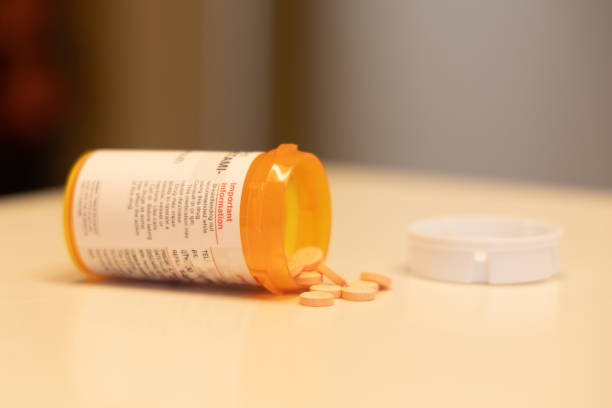.png?width=50&name=Untitled%20design%20(34).png)
Peter Francis
Donoghue vs Stevenson was a landmark decision that set a precedent for manufacturer negligence enforced to this day.
And it’s a law that all inventors must consider when commercialising their innovations. If they don’t, they run the risk of their own “snail in the bottle” moment quickly killing their venture.
Donoghue vs Stevenson
It all started nearly 100 years ago. May Donoghue, a Glasgow resident estranged from her husband and of very modest means, walked into a cafe in Paisley, Scotland. Little did she know she was also walking into legal history.
May was there to meet a friend who had kindly purchased her a Paisley treat-a ginger beer floater, which is ginger beer mixed with a spoonful of ice cream.
May was halfway through the floater when her friend poured the rest of the ginger beer into her glass.
It was then that the decomposed remains of a snail oozed out of the bottle and all over the ice cream.
May went into shock. She started having stomach pains and was subsequently diagnosed with gastro.
The Case
May engaged a firm of solicitors, who turned out to be very good solicitors as well as very publicly minded ones. They acted for her pro bono as May was a pauper; and they took the case through the legal system of Scotland and all the way to the House of Lords in London.
Legally, May Donoghue was in a tough spot.
The essential facts of what had happened, although seemingly commonplace, were each loaded with legal significance and against her.
In the first instance the ginger beer had been bought by May’s friend, not May; so, she could not have sued the cafe owner in contract. Secondly, the drink was ginger beer and as such sold in an opaque glass bottle, just as it is today. This is done to stop fermentation process.
So, no-one could see the snail in the bottle, which meant that May could not sue the café owner or the friend in negligence-they could not have seen the snail any more than May could, until of course it was too late.
The only other person left in this drama to sue was David Stevenson, the maker of the ginger beer. It was, after all, his poor bottle storage practices that had allowed the snail to get into the bottle in the first place.
Tracking Stevenson down was not hard – his name and whereabouts had been stamped on the bottle. Nor was proving that it was his fault that the snail was in the bottle.
The hard part was showing that, as the maker of the ginger beer, David Stevenson, owed a duty to May Donoghue to protect her from dead snails in her ginger floaters.
Just three weeks earlier, a mother and son had suffered a similar fate. Their ginger beer, whilst free of dead snails, contained two dead mice.
The mother and son sued the maker of the ginger beer and had failed. The judge took the view that manufacturers of products did not owe a duty of care to the consumers of those products.
When May’s suit against David Stevenson was heard in Scotland, the courts there applied the dead mice precedent and found in favour of Stevenson.
May, however, and her pro bono legal team (which by now had expanded to include a QC), pressed on, finally taking the case to the House of Lords where they not only won, but rewrote the law of consumer protection.
The House of Lords decided that manufacturers have a legally enforceable duty to the ultimate consumers of their products to ensure those products are free from latent defects like snails and mice, that cannot be seen in opaque bottles of ginger beer.
How Donoghue vs Stevenson Applies to Technology Commercialisation
What does a 90-year-old case involving a bottle of ginger beer have to do with technology commercialization?
We have a client who has developed a cellular therapy product which it wants manufactured for use in a clinical trial.
Our client has reached out to a TGA licensed manufacturer of cellular therapy products to manufacture the product for the trial.
And the manufacturer has its own set of terms on which it provides its services.
Among the usual suspects of warranties, indemnities and limitation of liability is this novel and dangerous cause dealing with latent defects. That is, a defect like a dead snail or mouse in a ginger beer bottle that cannot be detected until it is too late.
The clause has one specific function: to excuse the supplier from latent defects liability and shift that liability over to our client. The clause means if a patient in our client’s trial is harmed by a latent contaminate in the trial drug put there by the supplier, it will be our client, not the supplier, who will be ultimately paying out any claim brought by the patient.
So, how to Negotiate Out a latent defects clause?
As you might expect, we are fighting to remove the clause.
The points we are making include:
- our client’s insurers will never cover us for this exposure.
- our client are not the ones with the TGA manufacturing licence-the supplier is;
- our client is the supplier’s customer, not its insurer.
- the risk of supplying latently defective products is part of the risks of the supplier’s business, not our client’s business;
- the suppliers should have the practises and insurance in place to deal with these risks;
- how are our clients supposed to test for latent defects and which ones should we be looking for?
- the product will be supplied to our client in a form for direct administration to the patient; and
- there is nothing in our client’s trial approvals or protocols that contemplates or requires that they pre-test the product before administration.
Another Case Precedent-contaminated anaesthetic
The last three points recall another old case of Roe v Minister for Health.
In this 1954 decision a patient, Roe, was given an anaesthetic by lumbar puncture.
The anaesthetic was contained in glass ampules which, in accordance with common practice, were stored in a phenol solution to reduce the risk of infection.
The glass ampules had developed invisible microcracks and the phenol had seeped in and mixed with the anaesthetic.
When Roe was given the lumbar puncture, he was also injected with phenol and permanently paralysed.
Roe sued and lost because the way the ampules had been stored by the hospital accorded common practice and so there was no negligence.
Whilst this case may be decided differently today, (courts are now harder on manufacturers) the parallels are clearly there for our client.
The ampules of anaesthetic, like the ginger beer bottle, had become polluted with an invisible presence and were presented for immediate administration to the patient. That is, without an intermediate step of inspection.
Just as it is with our client’s clinical product. It will arrive in a form for immediate administration to the patients enrolled in the trial.
What Inventors need to Know about latent defects clauses
The main lesson from all of this? Be afraid of latent defects clauses, be very afraid.
Know of their danger and how they will present you with an uninsurable and potentially company breaking risk.
And the other lesson? From snails and mice to anaesthetics and clinical trial drugs, the law of latent defects has not changed much over the last century.
And that is a good thing.
Or as it says in Ecclesiastes 1:9-there is nothing new under the sun.
Looking to take your invention to market? Our expert innovation and technology commercialisation lawyers can help. For advice tailored to your needs, contact our team today.
.png?width=675&height=338&name=Untitled%20design%20(8).png)
.png?width=100&height=50&name=Untitled%20design%20(15).png)
.png?width=800&height=800&name=Untitled%20design%20(57).png)


